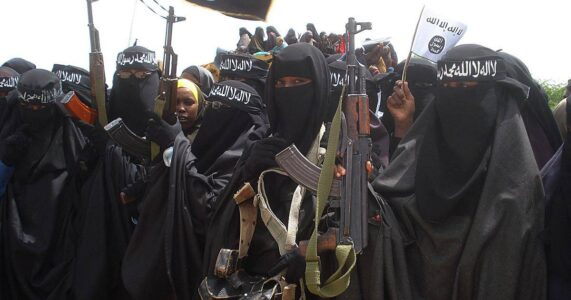
Kenyan women and girls explain why they joined Al-Shabaab terrorists
The direct involvement of women and girls in terrorism has attracted increased interest as the nature of recruitment tactics has evolved. In Kenya, their involvement in terrorist networks, such as the Al-Shabaab, is an emerging trend.
The recruitment of female members is most evident in Kenya’s coastal and northeastern counties but has also been reported in many other counties.
Women and girls have been identified as recruiters for the terrorist group, logistics planners, financial conduits, spies for terrorist activities and in some cases, masterminds behind terrorist attacks or conveners of terror cells.
The Al-Shabaab, or “the youth”, emerged in the mid-2000s as an offshoot of a Jihadist movement that peaked during Somalia’s civil war in the 1990s. Driven out of Mogadishu in 2006, it continues to pursue its main aim of establishing an Islamic state in Somalia through violent means. It has carried out repeated deadly attacks in Somalia but also in Kenya and Uganda. Both contribute troops to the African Union force in Somalia.
In one of my previous studies, I found that women may participate willingly because the extremist ideology resonates with their religiously inclined cultural values. They may also join due to the financial benefits that come with belonging to or associating with the group. Also, women may be forced or coerced to join through deception or intimidation.
In my most recent study, I looked at different ways in which recruitment occurs to analyse the diverse motivations of women and girls to join Al-Shabaab in the coastal region of Kenya. In particular, I sought to establish the “voluntariness” of their decisions – in other words, did they sign up on their own volition?
I interviewed 36 women or girls who had returned home from terrorist camps or defected from the network. I generated 16 case accounts of women and girls who explained “voluntariness” in Al-Shabaab recruitment.
The study revealed that the gender-dynamics of submission and subordination within families and the community contributes to Al-Shabaab recruitment. However, there were political and ideological motivations too.
Recruitment was deemed to be voluntary if a woman or girl – without duress – elected to join the Al-Shabaab network. Recruitment was viewed as involuntary if it occurred through deceptive or coercive means.
However, I must caution that voluntary and involuntary are not always mutually exclusive. I found that depending on allegiances, social interactions, ideological resonance, and changing circumstances within and beyond the Al-Shabaab network, recruits may reverse their original views.
Furthermore, there is a need to examine different aspects of autonomous decision-making. Some women who join terrorist networks do so to assert themselves within systems of oppression and patriarchy, and to embrace the lure of emancipation within the utopian caliphate.
Al-Shabaab thrives on the narrative of Kenya as a Christian state oppressing Muslims in Somalia and Kenya. This resonates with the global marginalisation of Muslims. Political and religious motivations came up during our interviews, as well as the expressed desire to support or defend fellow Muslims.
Two women explained their motivations to be wives of martyrs and to play their role to support the Muslim Ummah, or community. Nine interviewees explained how ideology influenced their decisions to support the Al-Shabaab. These decisions belie Kenyan media accounts of naive girls manipulated through romantic notions of Jihadi brides or wives.
“I read a lot of materials,” Aisha, 25-year-old at the time, an Al-Shabaab returnee who defected after two years said. “I was sad at how Muslims were treated as a second class group. I did not want my people to suffer, I needed to do something. I wanted to assist them in Somalia.”
Source: Scroll





